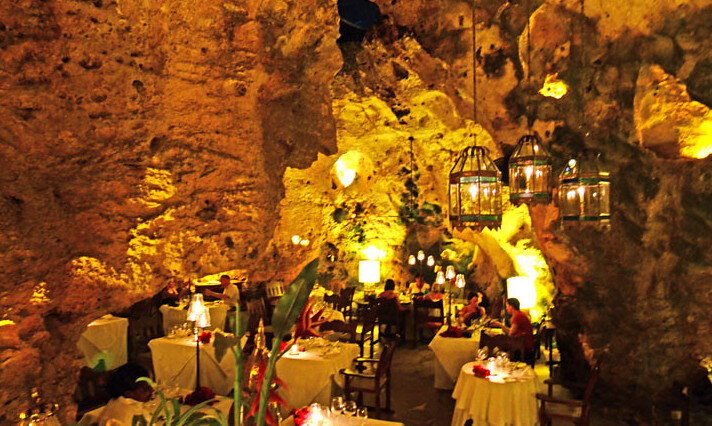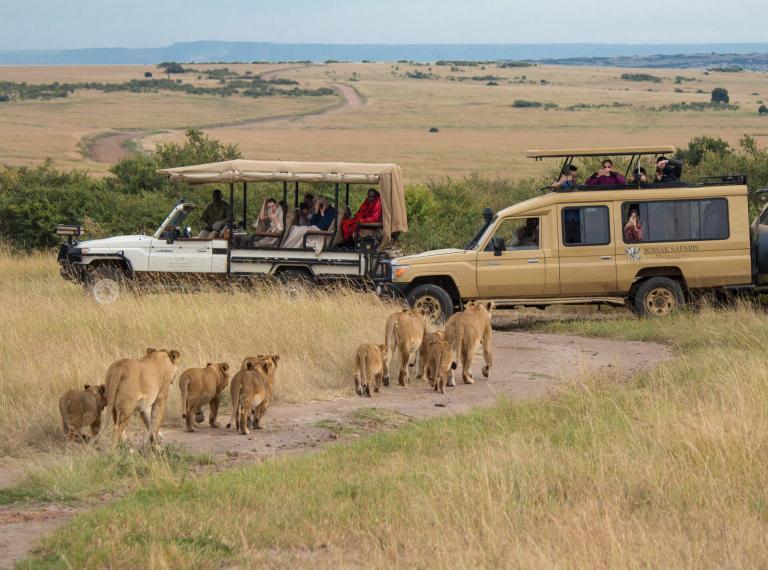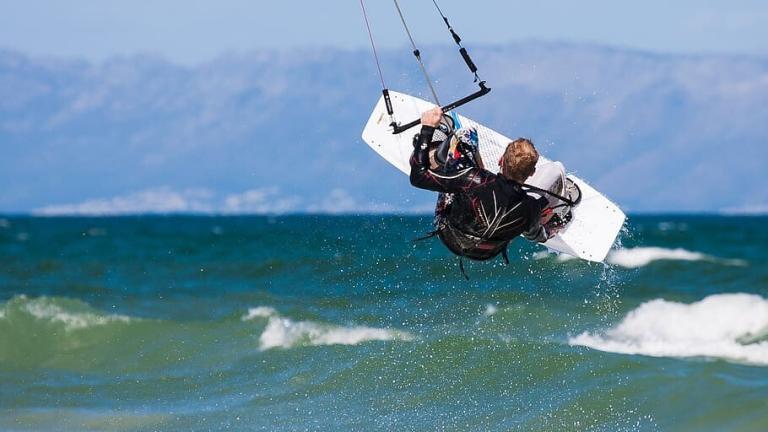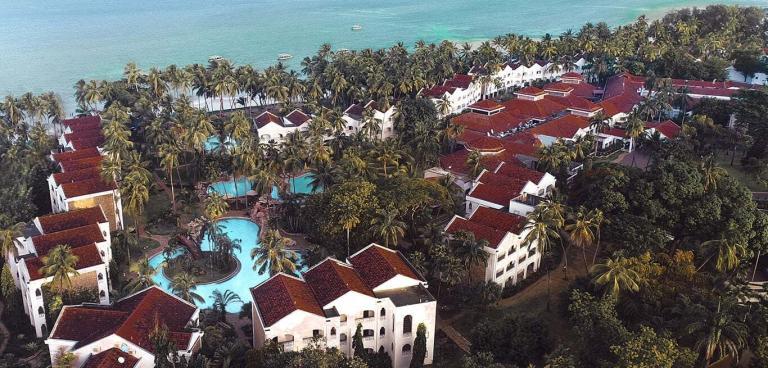How to Get Around Kenya: A Complete Transportation guide
Getting across Kenya’s varied landscapes, busy towns, and isolated wildlife reserves is essential to discovering the country’s colourful tapestry. Travelling across this fascinating nation requires familiarity with its fairly simple yet unique transportation system. With this all-inclusive guide, we reveal the various routes you may take across Kenya. From the busy city of Nairobi to the expansive savannas of the Maasai Mara. Below you’ll find a small transport guide which provides an overview of the various modes of transportation available to you during your stay in Kenya.
Matatus and Buses
Kenya’s famous matatus, or minibuses, are a symbol of the nation’s urban transportation system. Brightly painted with vibrant artwork, these cars weave through urban streets, providing a vital link for both commuters and tourists.
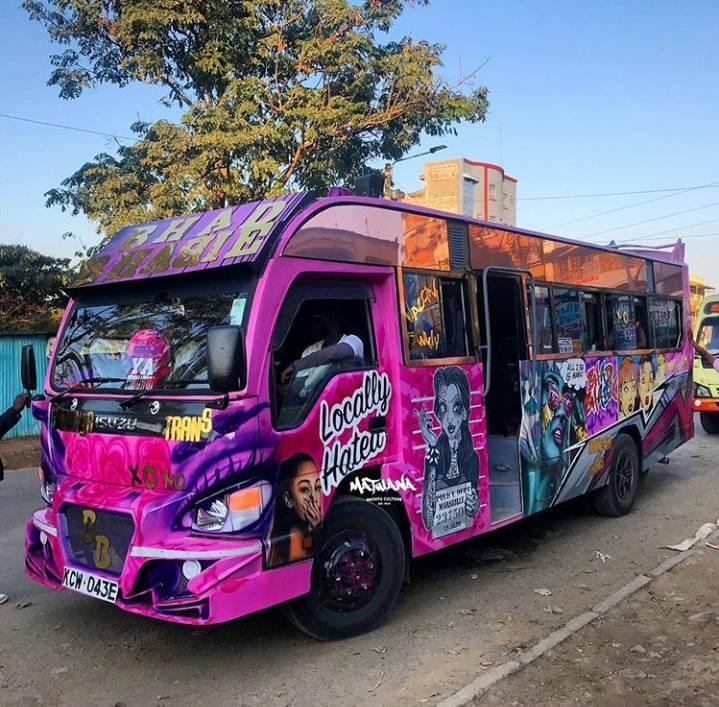
Matatus, which connect different neighbourhoods and destinations with their regular routes, provide an economical and effective way to go around Nairobi and neighbouring towns. Their owners’ personalities are reflected in their varied designs, and the loud music and vibrant interior design provide an immersive cultural experience in addition to simple transportation.
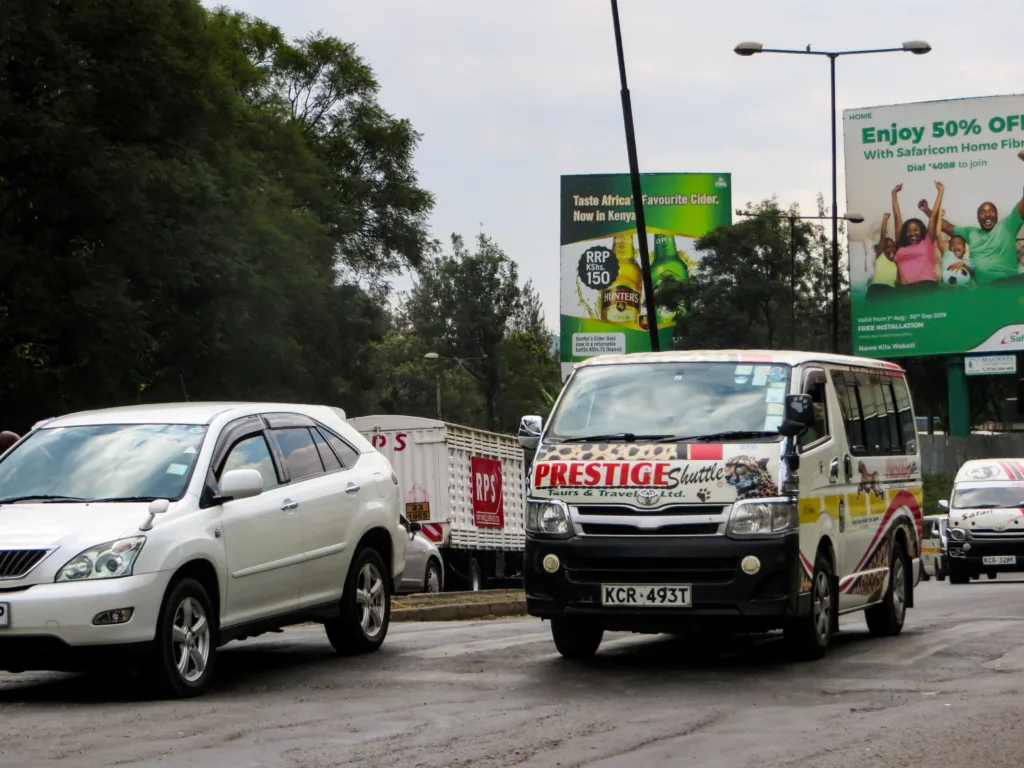
Even though they have a reputation for driving quickly and occasionally erratically, minibuses are still an essential feature of Kenya’s urban environment, representing both practicality and the vibrant energy of the country’s transport network.
Read more: How To Explore Nairobi In One Day (For Adventurers)
Tuk Tuks
The three-wheeled motorised marvels known as tuk-tuks move with an agility that epitomises urban convenience through Kenya’s busy streets. These little cars are often seen in the outer parts of cities and smaller towns, and they provide a quick and reasonably priced way to get around, especially for short trips.
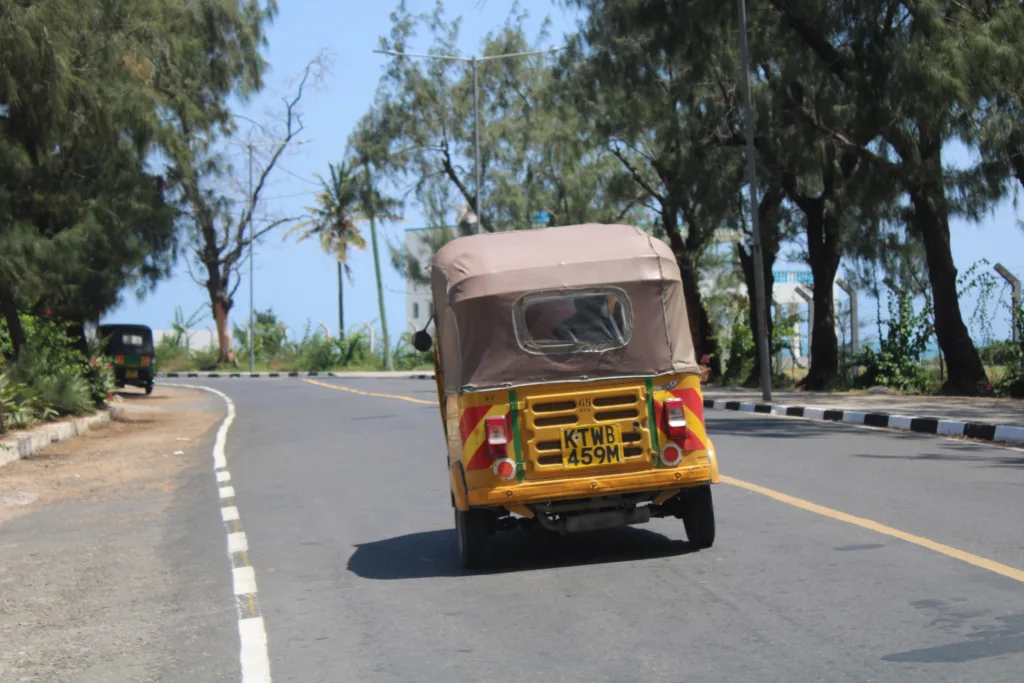
Tuk-tuks give the cityscape a lively flair with their unique designs and brilliant colours. They can easily manoeuvre through traffic thanks to their agility, giving passengers a comfortable and thrilling ride.
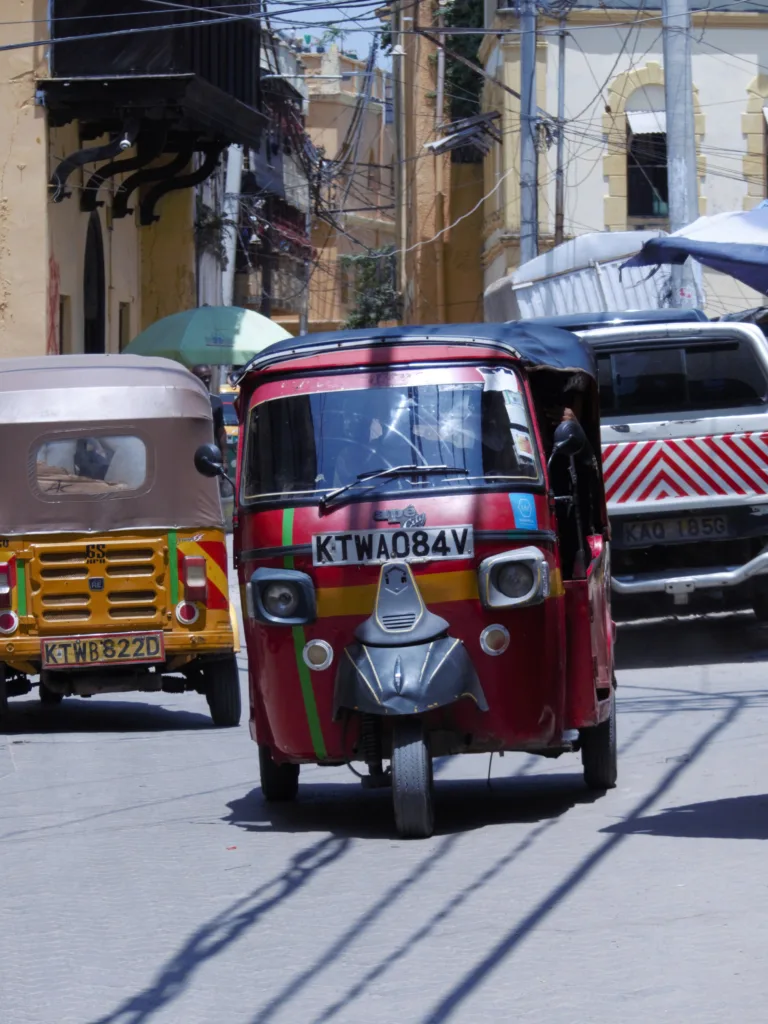
Despite their small size, they have a big impact on local transport since they provide tourists and locals with a fun and easy way to get around Kenya’s bustling streets.
Motorcycles (Boda Bodas)
The motorbike taxis known as “boda bodas,” which are commonplace, are the heartbeat of Kenya’s transportation system. Boda Bodas provide a quick and easy way to get around uneven terrain or through metropolitan traffic, which makes them one of the most popular ways to get around for short distances.

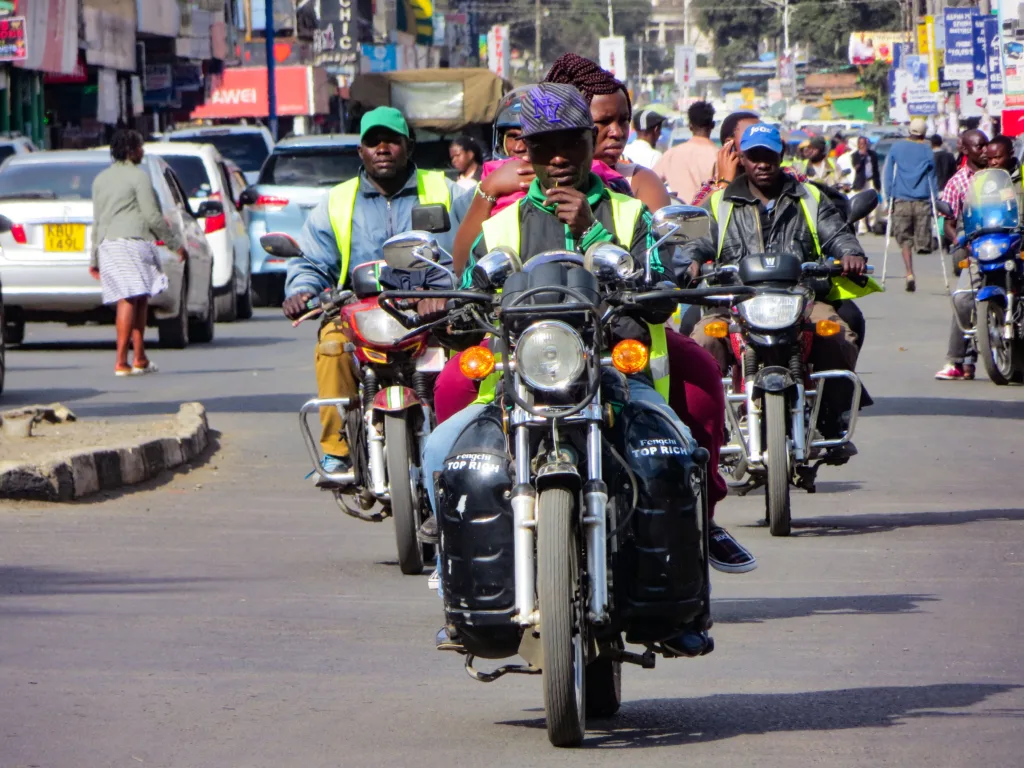
They are everywhere, transporting people, cargo, food and even animals with amazing speed and agility. Even though they are incredibly convenient, their daring manoeuvres across crowded streets and uneven terrain can at times prove to be a little dangerous.
Uber and Bolt
Uber is a global powerhouse in the field of contemporary transportation, and it has become an integral part of Kenya’s urban mobility scene.
Uber is now a popular option for both locals and tourists because it provides a practical, affordable, and secure substitute for traditional taxis. Using a few smartphone taps, travellers can hail a vehicle, follow the arrival of their driver, and take pleasure in smooth travel at prices that are open and frequently competitive. In addition to being convenient, Uber has improved safety standards by giving users peace of mind with features like driver identification, GPS tracking, and cashless transactions.
Long Distances and popular routes for travelers
I’ve listed below some of the most popular routes taken by travelers which are also included in the most common itineraries.
Nairobi to Masai Mara
Nairobi to Masai Mara by Road:
The most scenic and popular route from Nairobi to Masai Mara is by road, offering a firsthand experience of the country’s amazing landscapes. The drive takes approximately 5 to 6-hour drive, traversing from Nairobi through the famous Rift Valley escarpment, witnessing breathtaking views of the Great Rift Valley, and onward to Narok Town before reaching the Masai Mara.
Nairobi to Masai Mara by Air:
For those seeking a quicker and more panoramic route, flying from Nairobi to Masai Mara is the epitome of convenience and luxury. Several domestic airlines such as Safarilink and FlySax operate daily flights from Wilson Airport in Nairobi to various airstrips in the Masai Mara, reducing travel time to around 45 minutes and treating passengers to stunning aerial views of the Kenyan landscape. If you have a bigger budget available and limited time in Kenya, then I’d recommend flying as you’ll save a lot of time.
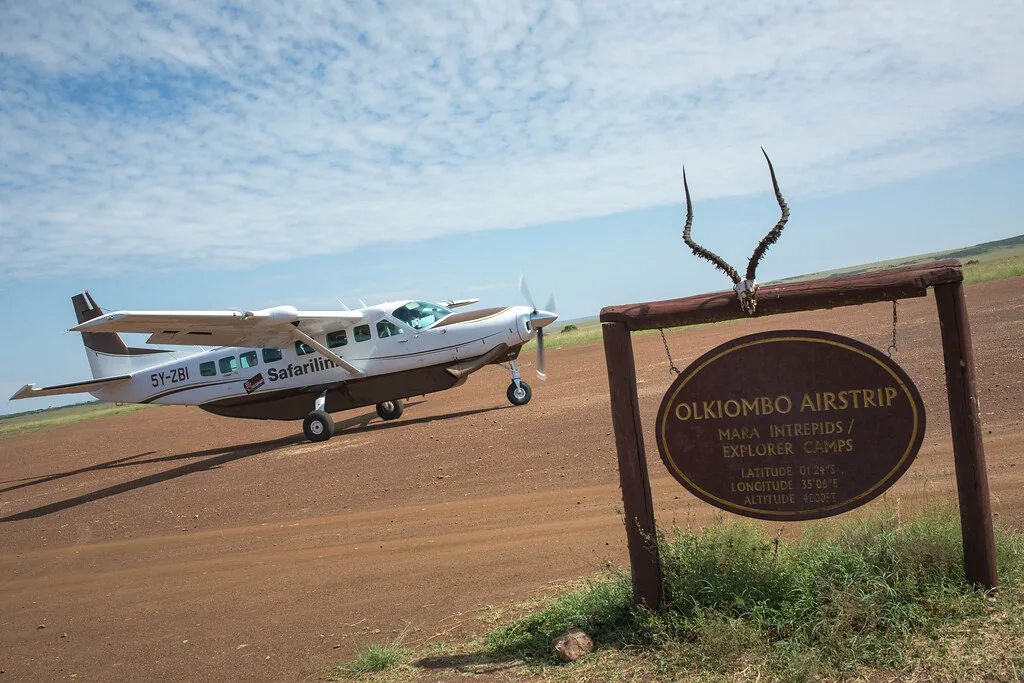
Nairobi to Masai Mara Self-Drive Adventures:
If you’re an adventurous soul seeking flexibility and independence, a self-drive expedition from Nairobi to Masai Mara might be your calling. Rent a car in Nairobi and set off on an exhilarating road trip, embracing the freedom to explore at your pace while relishing the diverse landscapes along the way. There are various airbnbs within the Mara reserve which you can privately book. Most of these hosts also offer options for game drives as self-driving within the
Nairobi to Mombasa
Nairobi to Mombasa by Road: The most traditional and scenic route from Nairobi to Mombasa is by road, unveiling a tapestry of Kenya’s changing terrains. The journey takes approximately 6 to 8 hours along the Nairobi-Mombasa highway. You’ll pass Tsavo National Park and if you’re lucky you’ll even spot some wildlife along the way. It’s a nice route to drive, just make sure you leave very early in the morning so that you can still enjoy the afternoon at the beach without losing an entire day of your beach vacation.
Nairobi to Mombasa by Air: For those seeking swiftness and aerial views, flying from Nairobi to Mombasa presents a convenient option. Several airlines offer daily flights from Jomo Kenyatta International Airport in Nairobi to Moi International Airport in Mombasa, reducing travel time to approximately 1 to 1.5 hours and providing panoramic views of Kenya’s landscapes from above.

Nairobi to Mombasa with Guided Tours: Opting for guided tours from Nairobi to Mombasa offers a hassle-free and comprehensive exploration. You can find numerous tour operators curate packages inclusive of transportation, accommodations, and curated experiences, ensuring a seamless journey.
Nairobi to Mombasa via SGR Train Route: Experience a unique travel adventure by taking the Standard Gauge Railway (SGR) from Nairobi to Mombasa. The Madaraka Express offers both express and intercounty train services, providing a comfortable and scenic journey that takes approximately 4 to 5 hours.
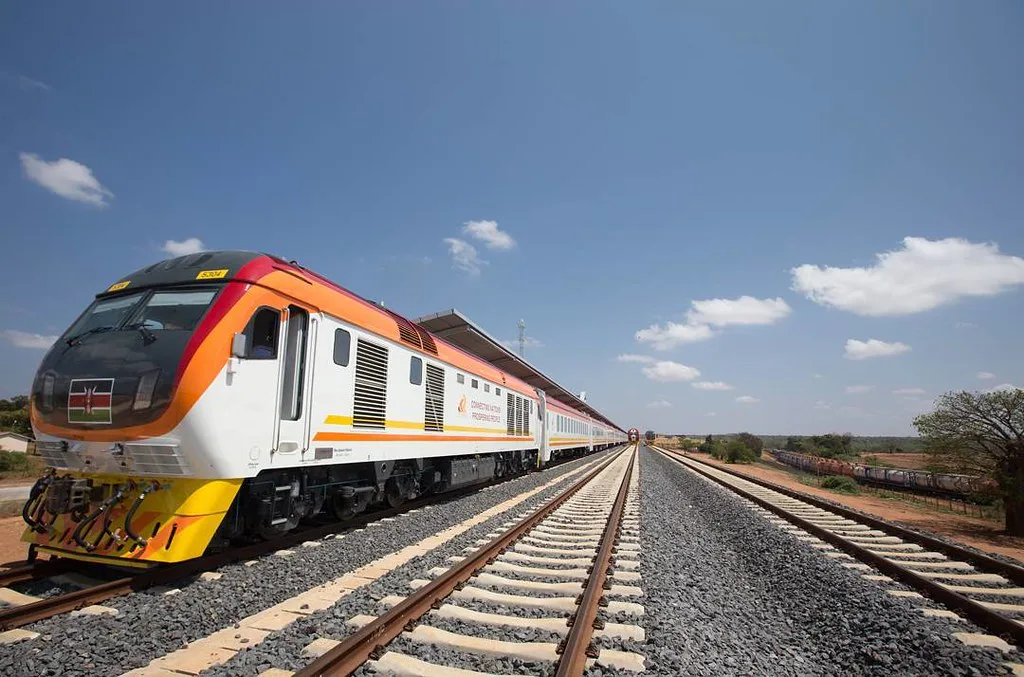
Nairobi to Diani Beach
Nairobi to Diani Beach by Air: Multiple airlines operate daily flights from Jomo Kenyatta International Airport in Nairobi to Ukunda Airstrip, which serves as the gateway to Diani Beach. The flight takes approximately 1 to 1.5 hours, offering glimpses of Kenya’s landscapes from above before landing close to the pristine shores of Diani Beach.
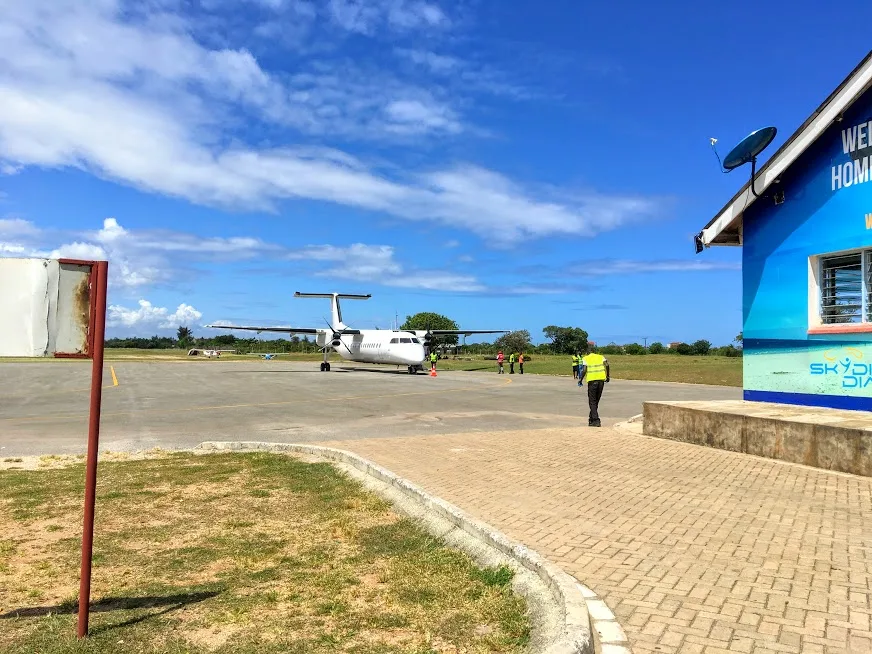
Nairobi to Diani Beach by Road: For those seeking an adventurous road trip, the journey from Nairobi to Diani Beach presents a scenic drive spanning around 5 to 6 hours. Traverse through picturesque landscapes, passing towns like Voi and Mombasa along the Nairobi-Mombasa highway.
Nairobi to Lamu
Nairobi to Lamu by Air
Several airlines offer daily flights from Jomo Kenyatta International Airport in Nairobi to Manda Airport in Lamu, making this journey a seamless transition from the city’s bustle to the serenity of the island. The flight takes approximately 1 to 1.5 hours.
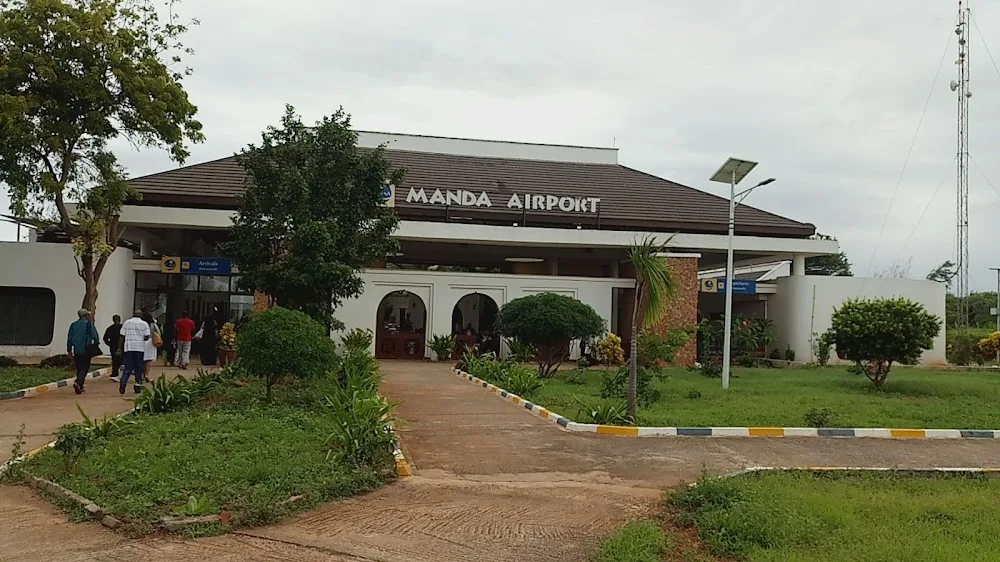
Conclusion
As you can see there are various ways how you can get around Kenya. Some transportation modes seem more conventional than others, and each has its advantages and disadvantages. What’s important is that all these are a part of the Kenyan culture and when you are here, you should try some of these out. Just make sure you are always safe and wear helmets where necessary (especially when riding Boda Bodas).


